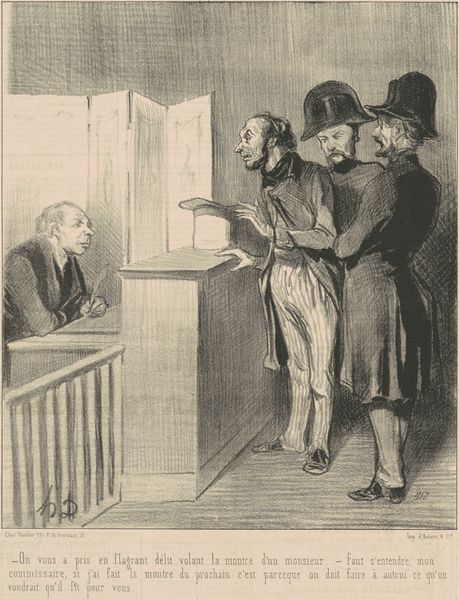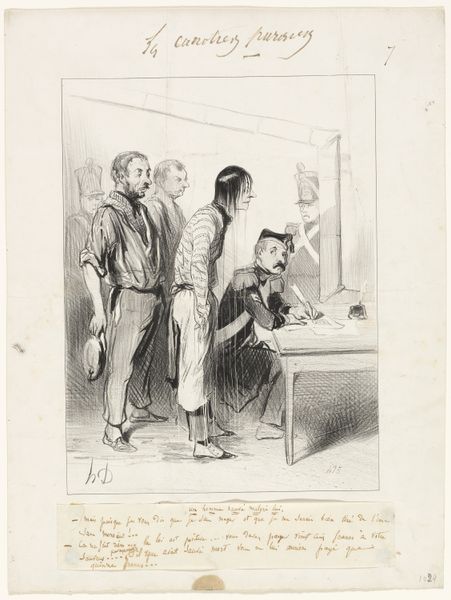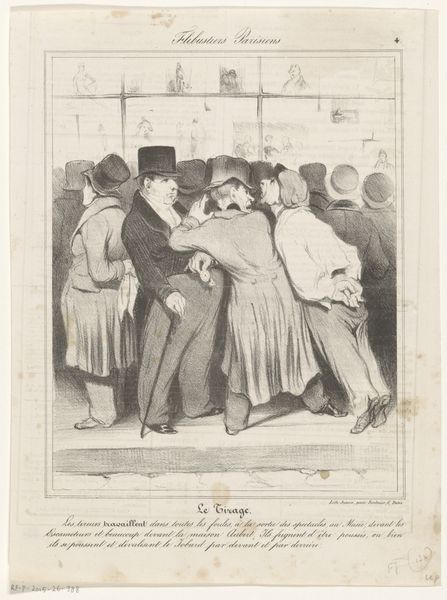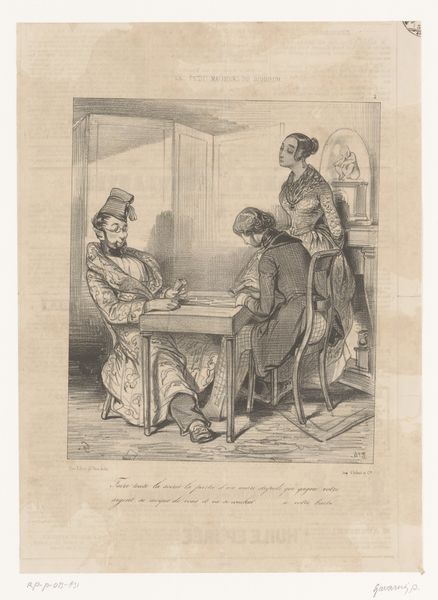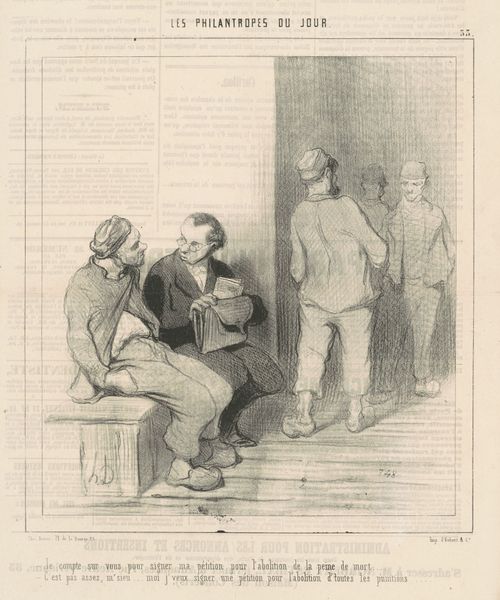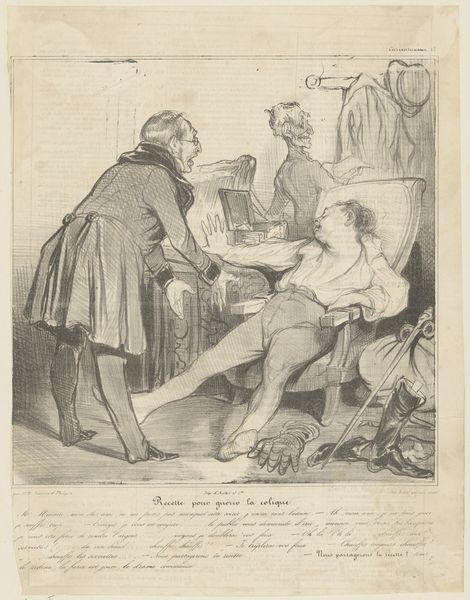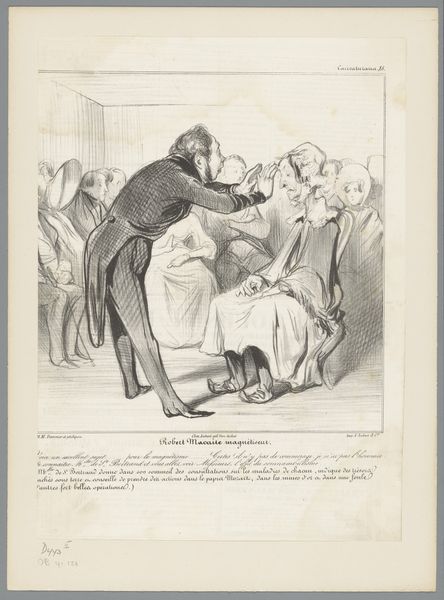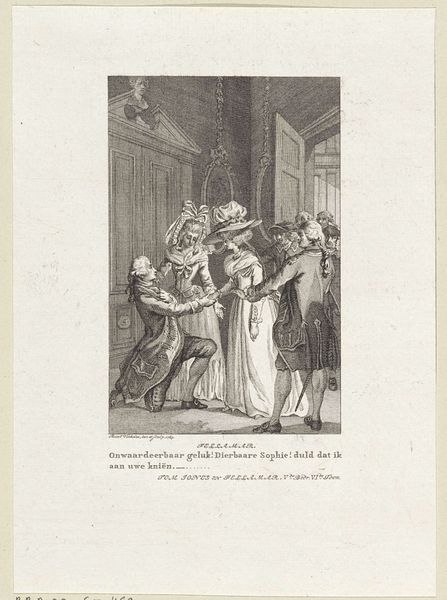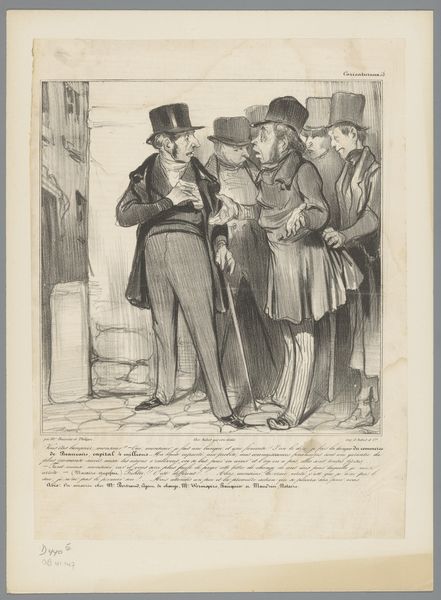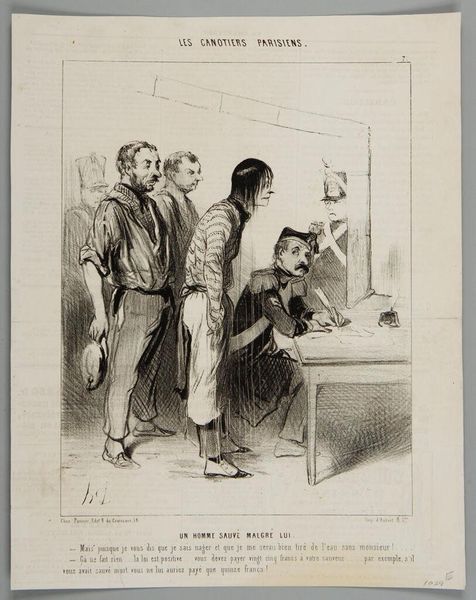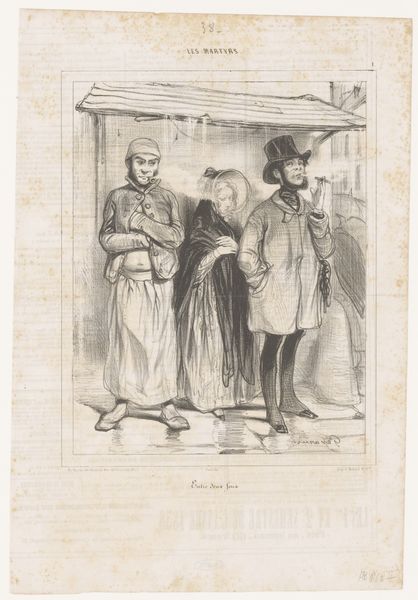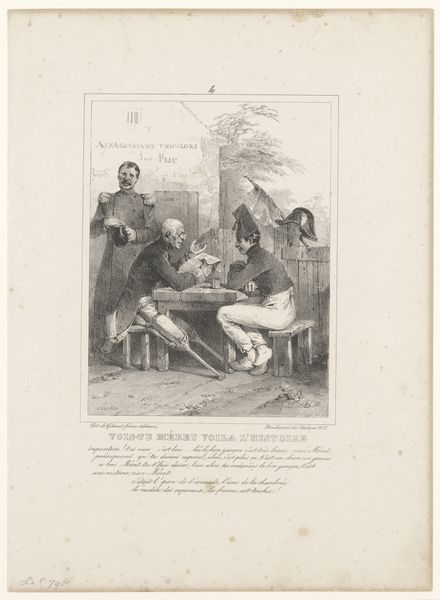
drawing, lithograph, pencil
#
drawing
#
16_19th-century
#
lithograph
#
caricature
#
romanticism
#
pencil
#
genre-painting
#
history-painting
#
realism
Dimensions: height 363 mm, width 245 mm
Copyright: Rijks Museum: Open Domain
Editor: This lithograph by Honoré Daumier, titled "Man Defends Himself Before the Police," dates back to 1843. There’s such a strong sense of tension here. What strikes me is how powerless the accused man appears, yet there's a defiance in his stance. How do you interpret this work? Curator: Daumier was deeply committed to social justice, and this lithograph speaks volumes about the power dynamics of 19th-century France. Think about the context: the July Monarchy, a period of increasing social unrest and censorship. Daumier, through his caricatures, was consistently challenging the status quo, advocating for the marginalized. How does the setting of the scene—likely a courtroom or police station—contribute to your understanding of that power imbalance? Editor: I see it now. The setting emphasizes the institutional forces at play. The rigid architecture, the imposing figures of the police...it all seems designed to intimidate. So, is Daumier using caricature here not just for humor, but as a tool for social commentary? Curator: Exactly. He is exaggerating physical features and using composition to highlight the vulnerabilities of the common person against the backdrop of authoritarian power. We should note Daumier repeatedly came into conflict with authorities for depicting these scenes. This makes one think about contemporary discussions around institutionalized power, authority and accountability. Editor: It is fascinating to consider that Daumier used art to challenge the establishment, much like activists do today. Thank you! Curator: Indeed! Reflecting on his work in relation to present-day issues has enriched my appreciation.
Comments
No comments
Be the first to comment and join the conversation on the ultimate creative platform.
